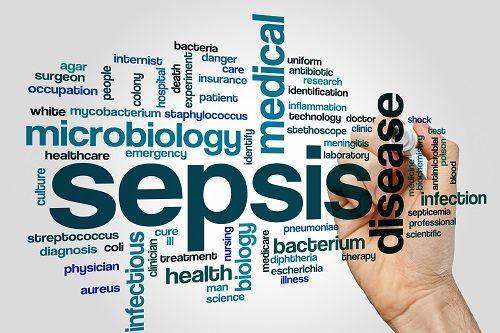Hospitalizations and Drug Prescriptions in Patients Pre- and Post-Sepsis
Hospitalization rates increased significantly after sepsis, with 11.9% of survivors rehospitalized for recurrent sepsis, and 56.6% receiving outpatient anti-infective treatment.

Sepsis is the body’s extreme autoimmune response to an infection. The US Centers for Disease Control and Prevention (CDC) reports that almost any infection can lead to sepsis, and 1 in 3 hospital mortalities result from sepsis.
New or recurrent infections and sepsis are the leading causes of rehospitalization after sepsis. One study, published in JAMA, wanted to examine whether patient-inherent risk factors increase the risk of severe recurrent infections. The investigators examined the change in infection-related hospitalizations and outpatients drug prescriptions in patients pre-sepsis versus post-sepsis.
The retrospective cohort study used the International Statistical Classification of Diseases and Related Health Problems, Tenth Revision, German Modification (ICD-10-GM) to identify inpatient sepsis cases. From January 1, 2013-December 31, 2014, the investigators identified German patients 15 years and older with no history of sepsis for at least 24 months prior to hospitalization. They analyzed hospitalizations and drug prescriptions in the 12 months pre-sepsis and post-sepsis.
The study included 159684 sepsis patients, 116507 of whom survived hospitalization. The average age was 73.0 years, and 52.1% were male. Of the survivors, 32.5% had severe sepsis, 27.7% were treated in an intensive care unit (ICU), and 7.4% had no comorbidities.
In the 12 months pre-sepsis, 66.8% of the survivors were rehospitalized, with 45.0% were rehospitalized with infection. Among the survivors, 11.9% were rehospitalized with recurrent sepsis, 25.9% of whom were admitted to the ICU. In the outpatient setting, 56.6% of sepsis survivors received anti-infective treatment.
In the 12 months post-sepsis, hospitalization rates increase by 3.4%, up to 66.8% from 63.4% in the 12 months pre-sepsis. Meanwhile, the proportion of patients with infection-related hospitalizations increased by 9.6%, up to 45.0% post-sepsis from 35.4% pre-sepsis. The proportion of patients with device-related infections close to doubled from pre-sepsis to post-sepsis. The total number of outpatient drug prescriptions decreased, but the proportion of patients with 1 or more anti-infective prescription increased by 4.0%.
Notably, the increase in hospitalization (from 22.5% to 54.6%) and infection-related hospitalization rates (from 6.4% to 31.4%) were highest in patients without preexisting medical, cognitive, or psychological impairments. Anti-infective prescriptions consistently increased across all subgroups, most significantly in survivors without preexisting impairments (16.7%).
The study found that infection-related hospitalizations affected 2 out of every 3 sepsis survivors. Post-sepsis hospitalizations increased by 9.6%, though more than half of those patients had contracted infectious diseases that necessitated hospitalization prior to their sepsis.
The investigators concluded that many sepsis patients were at risk of severe infection pre-sepsis, likely owing to immune dysfunction. Patients without prior impairments and with low rated of pre-sepsis infection-related hospitalizations and drug prescriptions saw these rates increase significantly post-sepsis.
